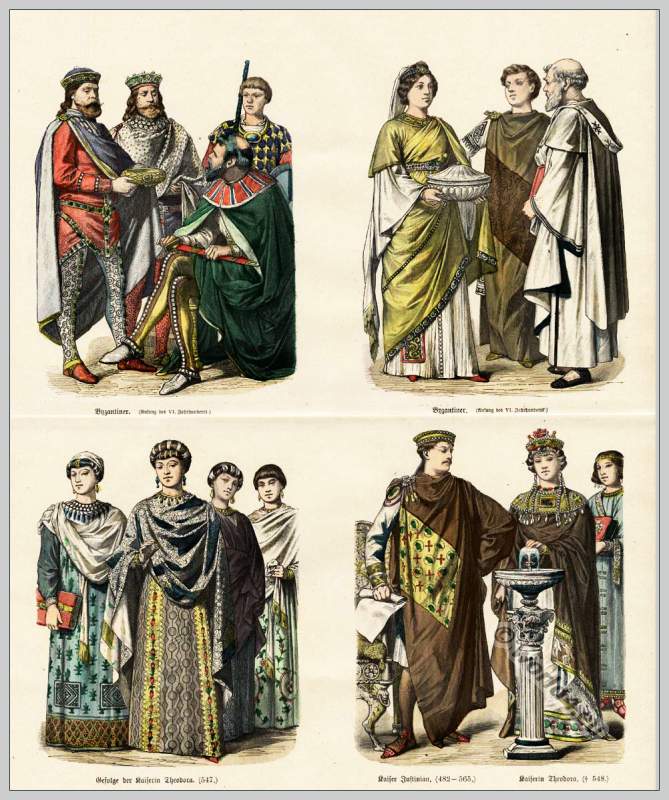Italian XV Century. 1400-1500.
Plate No 31.
Typical Italian Renaissance woman’s ensemble. The Cotehardie and houppelande,
Italy 15th century. Fashion from 1400 to 1500.
The Italians of this time wore a slightly different costume than the rest of the world. Whether this was so because of the climate or because of differences in temperament, is hard to say but Italian dress during the Middle Ages and the Renaissance did vary slightly from and influenced the dress of other countries.
The costume worn by the man is not very different from those of young men in other countries; it is in cut and length of garments that it differs. His hair is combed in a long “bob” and he wears a variation of the Phrygian bonnet. This one is made of felt and later developed into the tall sugar-loaf beaver. He is seen in a short Cotehardie to which his hose is fastened with “points.” Notice the treatment of his sleeves. They are slashes and show the white shirt underneath. As can be seen on his left arm, this white undershirt is pulled out in a puff. This custom of slashes and puffs spread all over Europe during the next costume period.
Over his Cotehardie he is wearing a very peculiar type of houppelande. It might be called a super-tunic with certain houppelande characteristics. Whatever its name, it is a new appearance of the paenula type of outer-garment. It is a rectangular garment with a hole in the center for the head. This young man has his girdled in front, allowing the back section to hang like a cape. His ensemble is completed by gauntlets. The bird on his wrist is a falcon — a bird used for hunting small fowl. Falconry was most popular during the Renaissance.
The woman’s ensemble is typical Italian Renaissance and can be seen in various paintings of the time. During the 15th century women often shaved their foreheads. This young woman of Venice has shaved her hair in order to move the hair-line back but she has not attempt ad to conceal her hair. It is worn straight back and plaited to hang down the back in a wrapped queue. This style indicates that she is unmarried. She is wearing a fillet, jewelry, and a small cap. The low-necked bodies is another distinctive Italian feature. The separate skirt and bodice are other characteristic items to be noted here. The sleeves are very important since the following era adopted this type and used it. They are of different material from the rest of the outfit and are made in sections that fasten at the shoulder and elbow with points—like the man’s hose and cotehardie. They are slashed to allow a white chemise or under bodice to be puffed out at the openings.
Notice the fine materials, colors, and patterns in these rich, gay Italian ensembles.
Source: Museum Extension Project.







